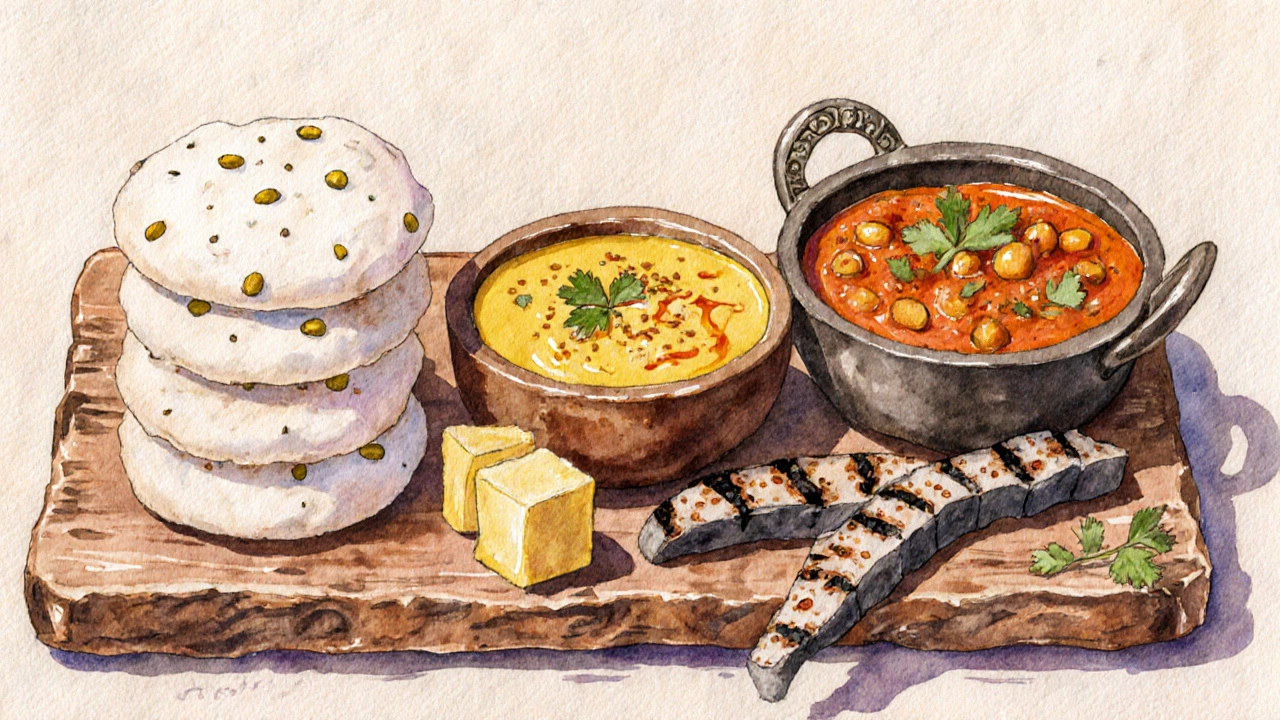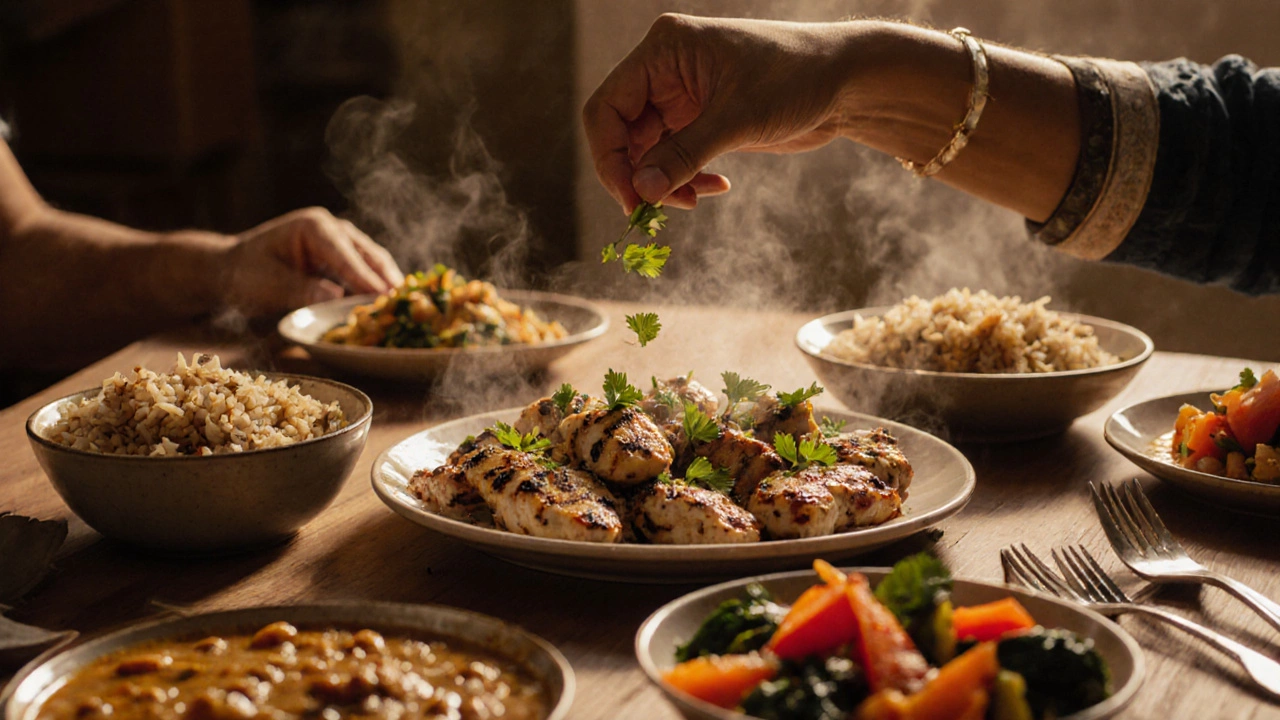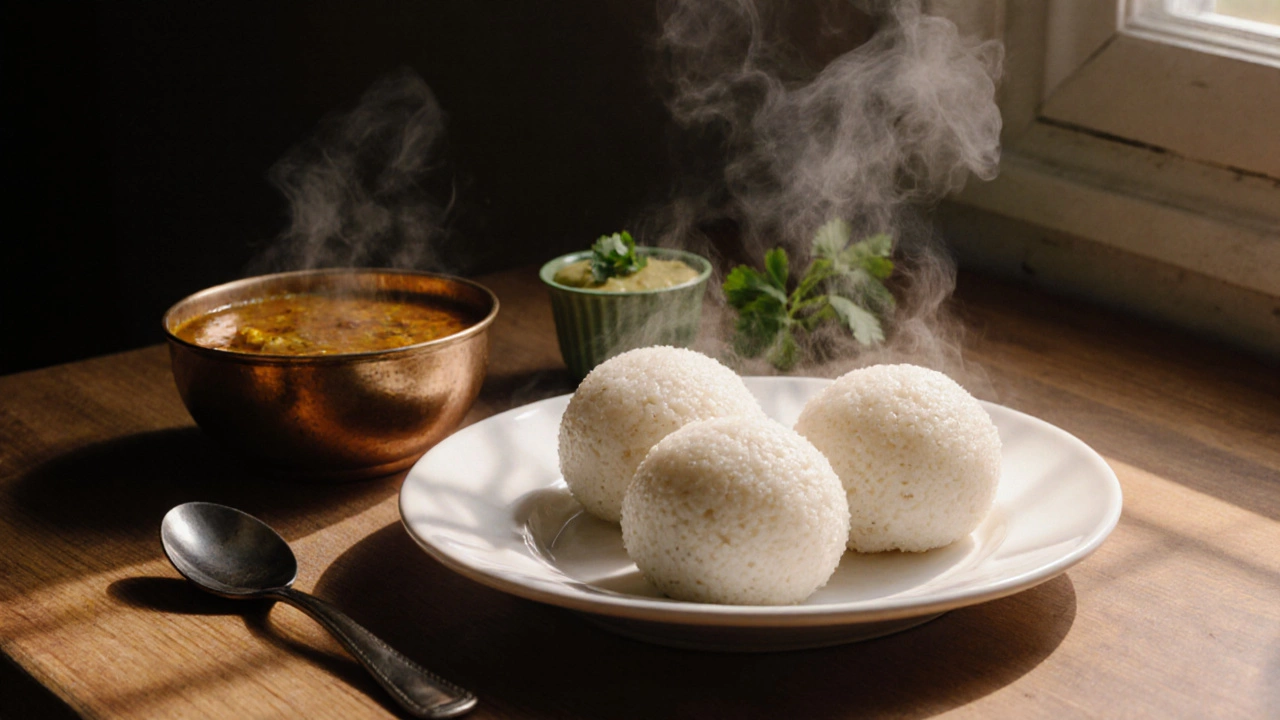Indian Dish Nutrient Calculator
Calculate Your Meal
Nutritional Results
Ever wonder which Indian plate can keep your waistline happy while still delivering the bold flavors you love? This guide breaks down the top nutrient‑dense options, shows how they stack up nutritionally, and gives you practical tips to make them a regular part of your meals.
How We Judge Healthiness
First, let’s set the benchmark. A healthy Indian dish is evaluated on four main criteria:
- Calorie density - fewer calories per gram means you can eat a satisfying portion without over‑eating.
- Protein content - essential for muscle repair and keeping you full longer.
- Fiber and micronutrients - fiber supports digestion, while vitamins like A, C, and folate boost immunity.
- Cooking method - steaming, grilling, or minimal oil use beats deep‑frying.
We gathered data from India’s National Institute of Nutrition and cross‑checked with the USDA FoodData Central to keep numbers accurate.
Top 5 Healthiest Indian Dishes
Here are the standout plates that consistently meet the four criteria.
- Idli is a steamed rice‑and‑lentil cake, traditionally served with sambar and coconut chutney. Because it’s cooked by steaming, it stays low‑fat while delivering a solid dose of complex carbs and protein.
- Dhokla hails from Gujarat and is made from fermented chickpea (besan) batter. The fermentation boosts B‑vitamins, and the final product is lightly tossed in mustard seeds for flavor without excess oil.
- Dal Tadka combines split yellow lentils with a tempering of cumin, garlic, and a splash of ghee - keep the ghee under a teaspoon and you have a protein‑rich, fiber‑packed bowl.
- Chana Masala features chickpeas simmered in a tomato‑onion base, spiced with turmeric and coriander. Chickpeas supply plant‑based protein and soluble fiber that helps regulate blood sugar.
- Tandoori Chicken (skinless) is marinated in yogurt, lemon, and smoky spices, then grilled in a tandoor. The high‑heat method seals in moisture while keeping the fat content low.
Quick Nutritional Snapshot
| Dish | Calories | Protein (g) | Fiber (g) | Key Vitamins |
|---|---|---|---|---|
| Idli | 58 | 2.0 | 1.0 | Vitamin B12, Folate |
| Dhokla | 102 | 5.2 | 2.5 | Vitamin B6, Niacin |
| Dal Tadka | 112 | 7.6 | 3.8 | Vitamin A, Folate |
| Chana Masala | 120 | 6.0 | 4.2 | Vitamin C, Iron |
| Tandoori Chicken | 140 | 24.0 | 0.0 | Vitamin B3, Selenium |

Why These Dishes Beat the Rest
Most Indian street‑food favorites rely on deep‑frying (think samosas or pakoras) or heavy cream sauces (like butter chicken). The five dishes above keep the calorie count low because they:
- Use steaming, grilling, or minimal‑oil tempering.
- Base the bulk on legumes, lentils, or fermented batter, which are naturally high in protein and fiber.
- Include spices that are antioxidants in their own right-turmeric, cumin, and coriander help fight inflammation.
Even the protein‑rich Paneer can be made healthier by opting for low‑fat cottage cheese and grilling it instead of frying.
Making the Dishes Even Healthier
Here are quick tweaks you can apply while cooking:
- Replace white rice or regular roti with brown rice to boost fiber.
- Use olive oil or a spray of mustard oil instead of ghee for tempering.
- Add chopped vegetables (spinach, carrots, bell peppers) to dal or sambar for extra micronutrients.
- Season with fresh herbs like cilantro and mint; they add flavor without sodium.
- If you crave creaminess, swirl in a spoonful of Greek yogurt instead of heavy cream.
Sample 7‑Day Meal Plan Featuring Healthy Indian Dishes
To turn knowledge into habit, try this simple plan. All portions are 1‑2 cups, suitable for an average adult with moderate activity.
- Day 1: Breakfast - Idli + sambar; Lunch - Brown rice with dal tadka; Dinner - Grilled tandoori chicken + mixed veg salad.
- Day 2: Breakfast - Dhokla with mint‑coriander chutney; Lunch - Quinoa pulao with peas; Dinner - Chana masala + whole‑wheat roti.
- Day 3: Breakfast - Poha (flattened rice) with peanuts; Lunch - Mixed vegetable stir‑fry + brown rice; Dinner - Paneer tikka (low‑fat) + cucumber raita.
- ...continue for days 4‑7 using the same dishes in different combos.
Rotate the proteins and keep the veggies colorful; you’ll hit daily targets for protein (≈50g), fiber (≥25g), and essential vitamins.

Common Pitfalls & How to Avoid Them
Even a healthy dish can turn junk if you slip on a few habits:
- Over‑oil the tempering. Measure oil with a teaspoon; a little goes a long way.
- Portion creep. Use a kitchen scale or visual cues (a fist‑size serving of carbs).
- Relying on cream‑based sauces. Swap cream for cashew‑based puree or yogurt.
- Skipping the veggies. Add at least one veg side to every meal.
FAQ
Which Indian dish has the highest protein per serving?
Skinless Tandoori Chicken tops the list, delivering about 24g of protein per 100g while staying under 150calories.
Can I make these dishes gluten‑free?
Yes. Swap any wheat‑based roti with millet or rice flour rotis, and use gluten‑free flours for batters like dhokla.
Are fermented foods like idli good for gut health?
Absolutely. Fermentation creates probiotics that support a healthy microbiome, and the sour note also helps lower the glycemic index.
How much oil is safe for daily Indian cooking?
Aim for no more than 2tablespoons (≈30ml) of oil per day, spread across meals. Use non‑stick cookware to reduce the need for extra oil.
Can these dishes fit into a vegetarian diet?
Yes. Replace tandoori chicken with tofu or paneer tikka, and keep the plant‑based dishes like dal, chana masala, and dhokla.
Takeaway
If you’re chasing flavor without the extra calories, start with the dishes above, tweak the cooking methods, and watch portion sizes. You’ll soon see that Indian cuisine can be both hearty and heart‑friendly.
